Myths Debunked: Front and Rear tires should run at (roughly) the same pressure
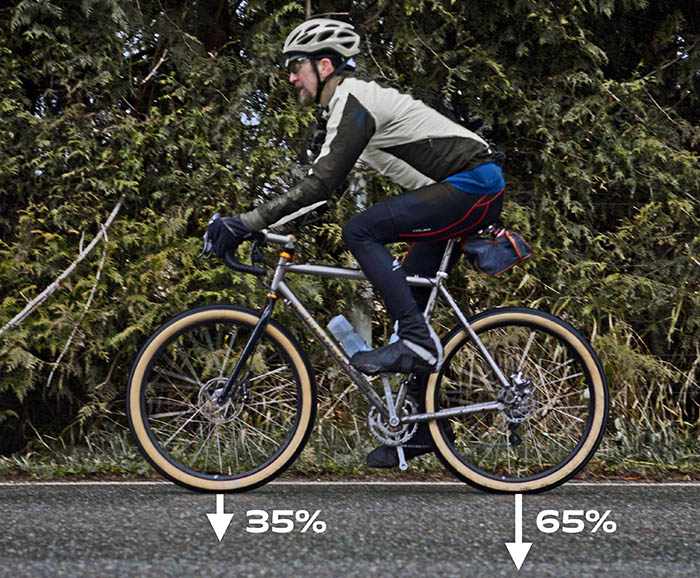
To celebrate Bicycle Quarterly‘s 15th anniversary, we are looking at myths in cycling: things we used to believe, but which we’ve since found out not to be true. Today, we explain why your bike’s weight distribution does not directly translate into your tire pressures.
We are partly responsible for the myth that front tires should run at significantly lower pressures. When we first started researching tires, we published Frank Berto’s tire pressure chart, which lists inflation pressures to achieve a ‘tire drop’ of 15% with average tires. That pressure depends on the width of the tire and on the load on the wheel.
Most bikes carry roughly twice as much weight on the rear wheel as on the front (above). So we reasoned that it makes sense to inflate the rear tire twice as hard as the front one. Except it doesn’t work that way.
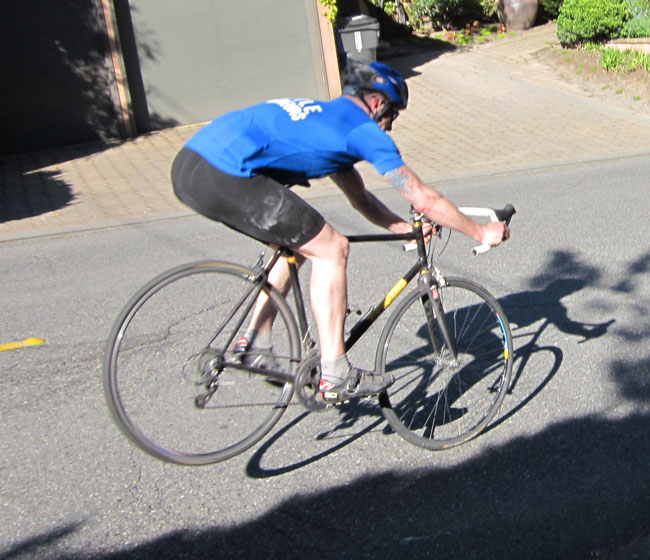
During hard braking, the entire weight of the rider is on the front wheel. Now the front tire carries three times as much weight as it usually does. If this isn’t factored into the tire pressure, then the tire can collapse during hard braking: Suddenly, the sidewall no longer holds up the tire. The tire loses the ability to transmit the forces from the road to the bike – braking and steering are seriously impaired. It’s like riding with a flat tire.
In recent years, the potential for trouble has increased as we now run supple tires at lower pressures. Back in 2010, when we published the chart, we inflated our 23 mm tires to 120 psi. Running the fronts at 80 psi was fine, since the stiff sidewalls of the tires most of us rode helped with holding up the bike.
These days, many of us are on supple 42 mm tires inflated to 35 psi. Dropping the front to 23 psi is fine when rolling along, but during hard braking, the sidewall will collapse.
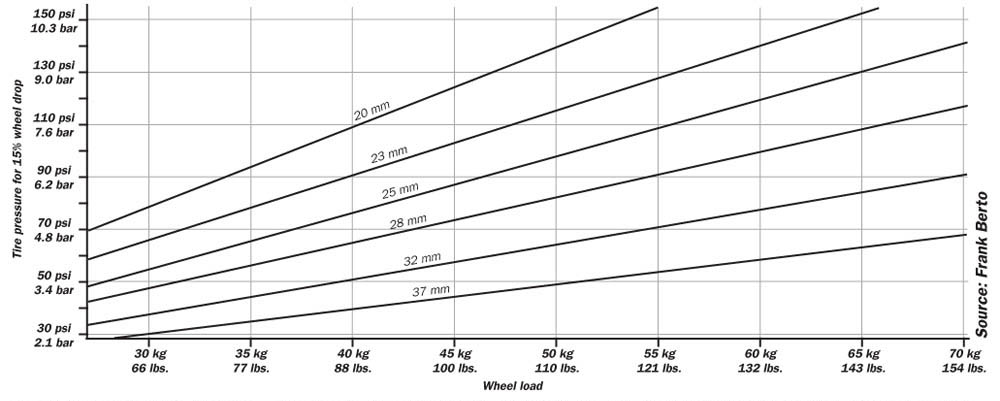
The solution is simple: Use Frank Berto’s chart (above) to calculate the optimum tire pressure for your rear wheel, based on the weight distribution of your bike. But for the front, simply match the pressure that you’ve calculated for the rear tire.
When you are just riding along, your front tire will be a bit harder than necessary, and you’ll lose a little comfort, but it’s better than risking problems during hard braking.
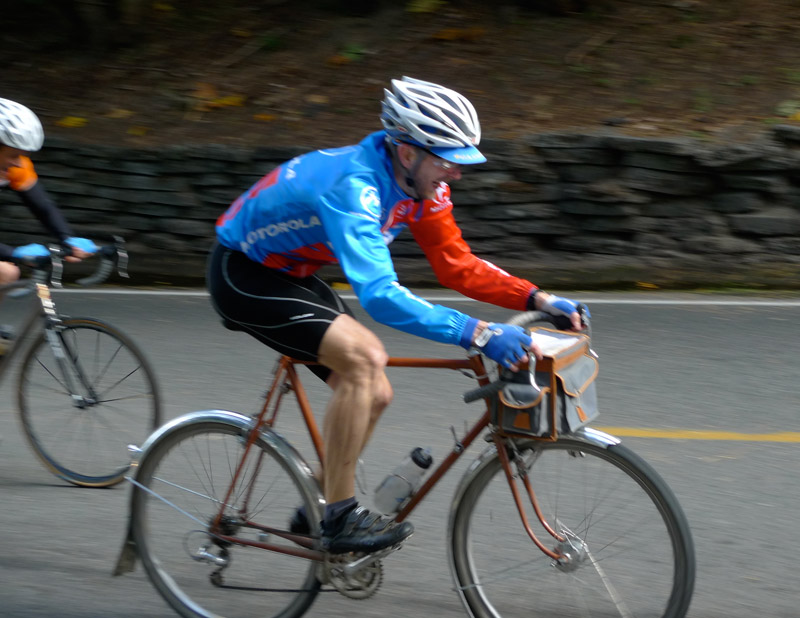
If you use a handlebar bag, that puts more weight on the front and works toward equalizing the weight distribution – a randonneur bike’s weight distribution is 45:55. This means that you don’t have to overinflate the front tire by much.
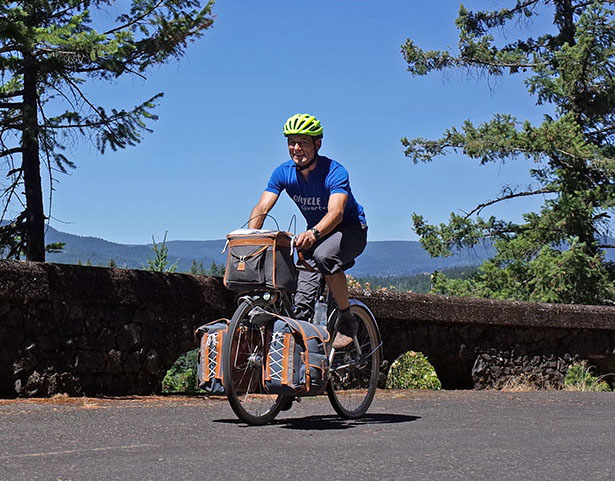
If you carry a heavy front load, your weight distribution may be heavier on the front than on the rear. In that case, you obviously want to inflate your front tire based on the actual weight it carries.
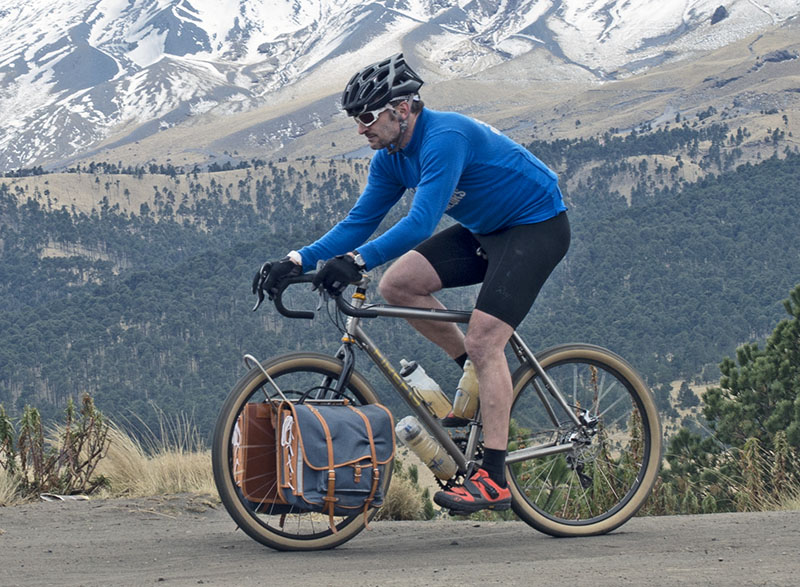
In any case, the pressures in the chart are just a starting point for your own experimentation. We’ve found that these pressures work well for supple tires and for riding on pavement. On gravel, you’ll want to reduce your pressure (above), but not so much that you bottom out frequently.
This week’s myth shows how our understanding of bicycles continues to evolve – and also why on-the-bike observation is more important than theoretical reasoning. What seems right in theory often overlooks factors that are important on the road.
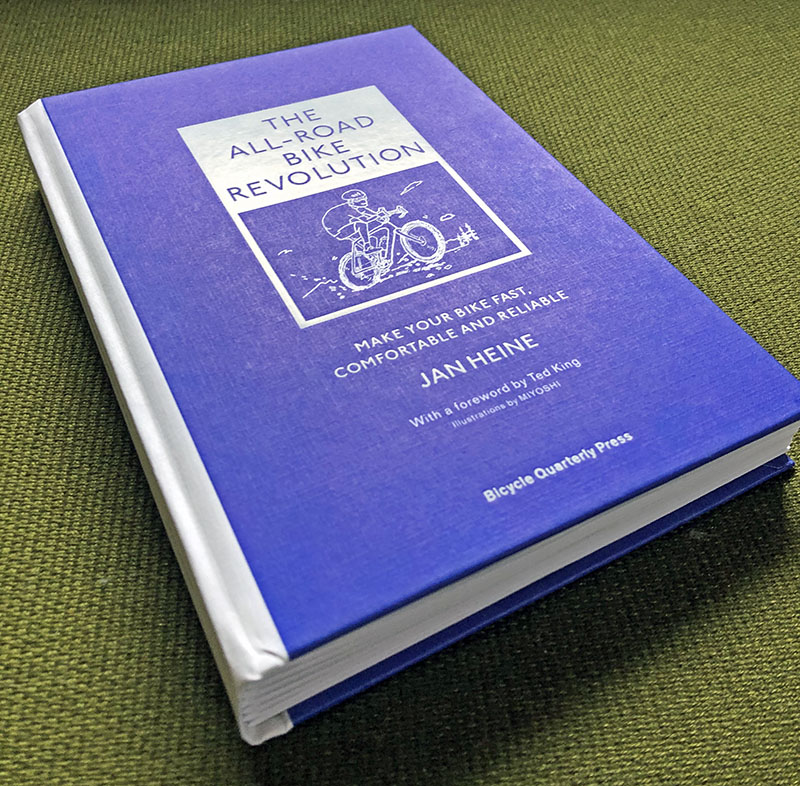
Update 11/17/2020: We’ve just published our new book ‘The All-Road Bike Revolution’ with all the research that has changed cycling in recent years. Find out why wide tires can be fast, how to find a frame that optimizes your power output, and how to get a bike that handles like an extension of your body. More information is here.


